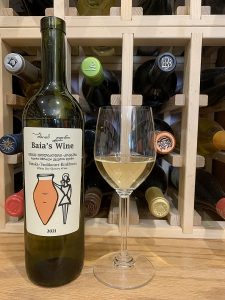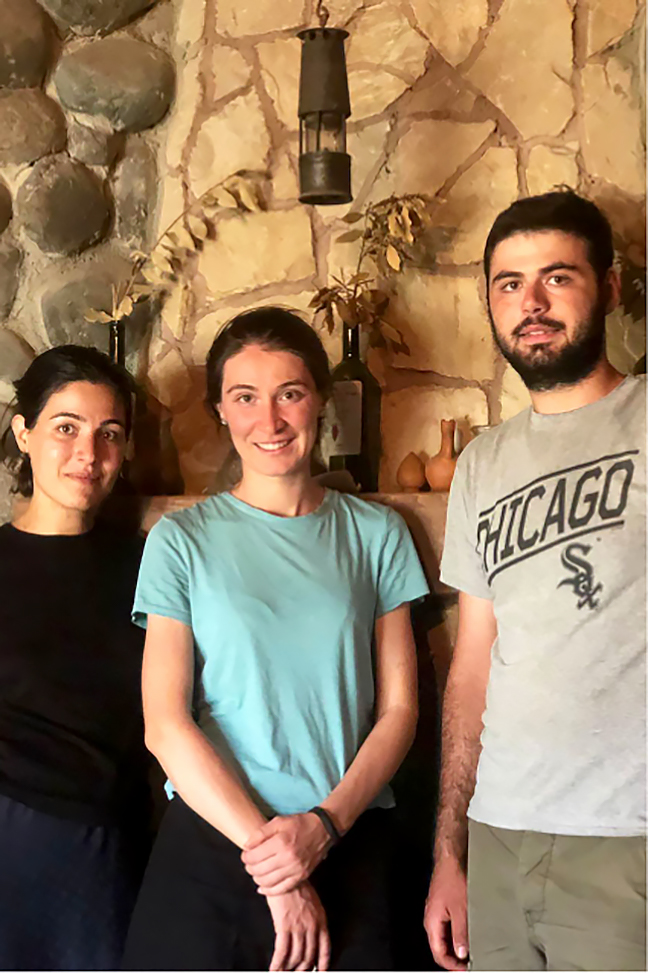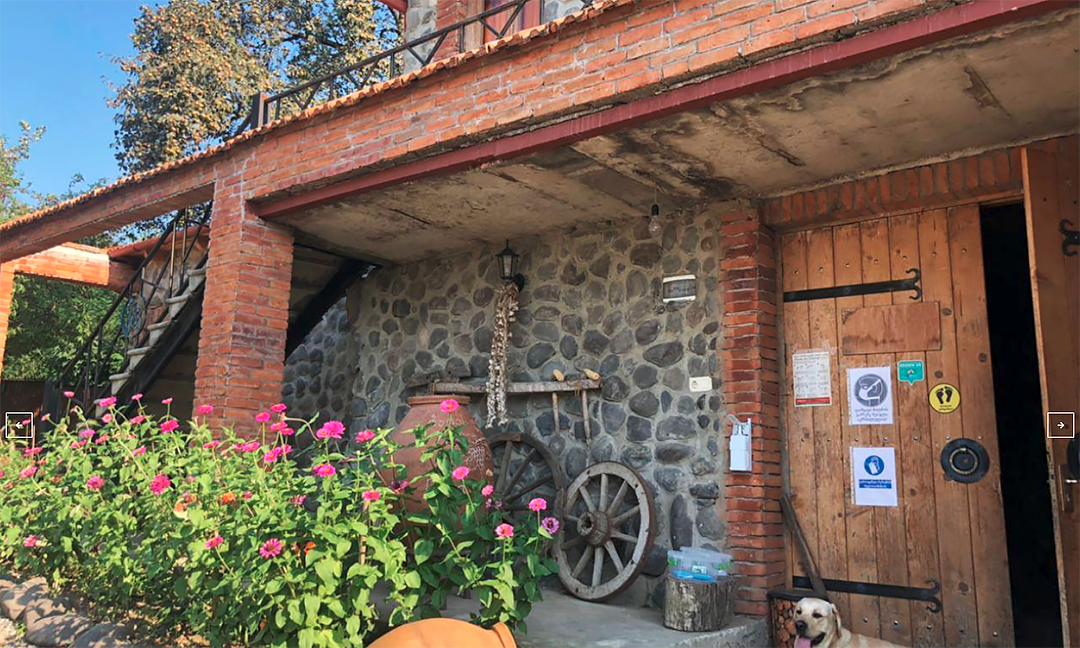Pale gold-amber color; light floral notes and straw on the nose; sweet apple, citrus, apricot, pear, butter, minerality on the palate.

Dry; mild tannins, good acidity. Medium body. Impressive depth and complexity. Blend of 60% tsolikouri, 20% tsitska, 20% krakhuna, all ancient Georgian grape varieties. Certified organic. This does not fall into familiar flavor niches of traditional wines, save that it is delicious and versatile. Tartness and acidity make it a versatile food wine. Impressively long finish. 13% ABV
The website explains: “After the fall of communism in Georgia, many winemakers in the country started a retrospective of wine grapes and wine making techniques that had made Georgia so unique in the winemaking world to begin with. In 2013, a couple of maverick Georgian winemakers such as Baia Abuladze and her sister Gvantsa started to rediscover the rarest species of wine grapes in Western Georgia and to focus on bio wine making techniques. The re-discovery process continues until today: Baia Abuladze, together with her winemaking family, stands among those Georgian winemakers who work to identify and classify local vine varieties.”

Georgia very likely is where humans first started making wine more than 8,000 years ago. It is where they oldest wine-making site has been discovered. The Georgian language word for wine is ghvino, which means our word “wine” likely has its origin in Georgia. Sadly, Georgian winemaking suffered under sommunism. It began a roaring comeback with the fall of the Soviet Union in 1989.
The traditional method of making wine in Georgia involves use of qvevri—also spelled kvevri. A qvevri/kvevri is a large, egg-shaped earthenware-terra-cotta vessel. It is similar to amphorae, but does not have handles. Qvevri range in size from 6 gallons to 2,600 gallons. The most common are 200-plus gallons. The clay used to produce qvevri is important because it influences the taste; it is similar to the choice of oak barrels in Western winemaking.

The inside of the qvevri is coated with beeswax to soften the clay impact. The outside is coated with lime. In most cases, qvevri are buried in the ground with only the circular mouth showing. The prefix qve/kve means “beneath” or “under.” The earth burial helps provide consistent temperature. A qvevri is a permanent winemaking vessels, cleaned, re-coated with beeswax and used year after year. Some actively-used qvevri are approaching 200 years old.
In Georgia winemaking, grapes are pressed then the juice, grape skins, stalks, and pips are poured into the qvevri. The wine then ferments at least six months with native yeasts. Usually malolactic fermentation is spontaneous. With white wine, the extended contact with the skins, stalks, and pips causes the wine color to be orange or amber. The method often is described as making white wine using red wine techniques. That is the technique used in this wine.
Baia’s Wine Tsitska-Tsolikouri-Krakhuna White Dry Qvevri Wine 2021 is delicious, taut, approachable wine made in the region that likely invented winemaking more than 8,000 years ago. It is made using techniques used thousands of years ago. Georgia—the country—enjoys a resurgence of its wine industry after being freed from Soviet Union constraints, and this effort is a shining example. Pair with fish; chicken; pork, especially braised with apples; Asian cuisine; salads; vegetarian fare. Cheese—hard goat cheese; manchego, comté, pecorino, aged gouda. $25
